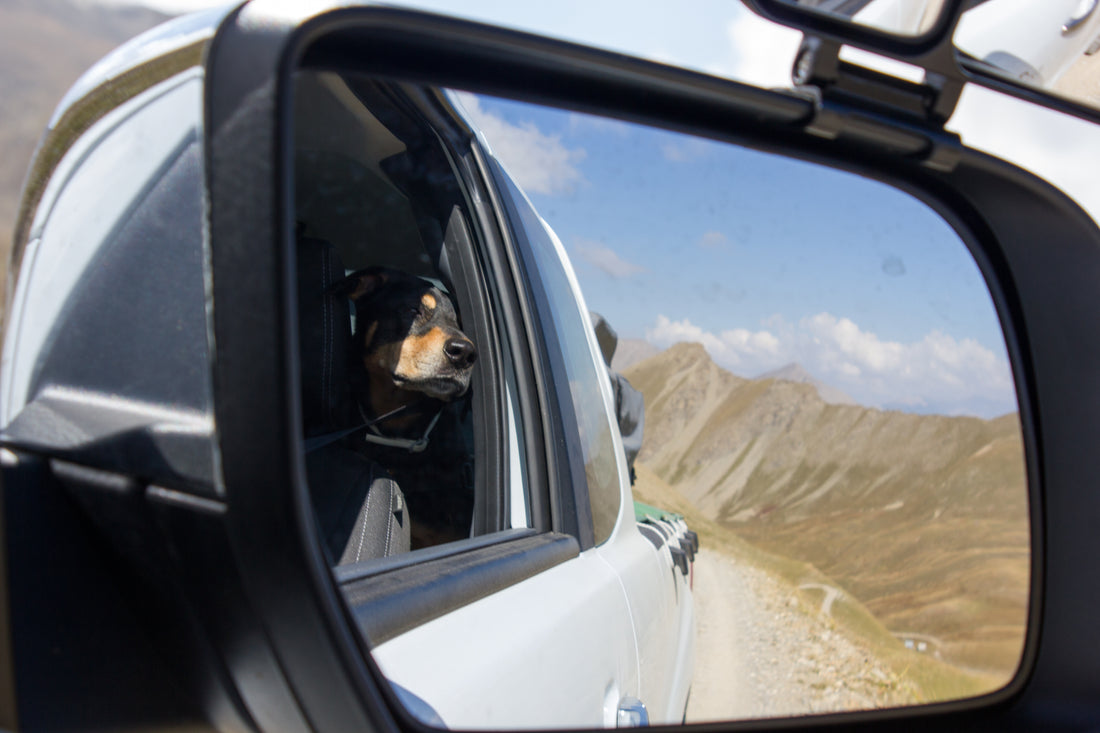Canine companions and outdoor adventure go hand in hand. If you’ve got a thirst for overlanding and a loyal companion at home, it makes perfect sense to bring them along. However, it can be intimidating getting everything together so they’re safe and comfortable. In this article we’ll simplify the process so you’ll be ready for adventures near and far. Here’s how to go overland adventuring with your dog.
Preparation
Preparation starts at home with basic training and socialization. First, ensure your dog is comfortable riding in your vehicle - you don’t want their first ride to be a 16-hour road trip. Ideally, they’ll associate your vehicle with fun activities. A dog that’s eager to travel is far easier to manage than a frightened or nervous dog.
If you need to tighten up basic commands, such as sit, stay, come, or heel, spend a little time each day working on those. When they know exactly what’s asked of them, they’ll be more confident and have commands they can fall back on when they’re in new, stimulating environments.
You’ll also want your dog to be up to date on all commonly required vaccinations and medications, such as heartworm prevention, and topical flea and tick treatment. If you’re traveling to a destination where you’ll need proof of vaccinations, be sure to stow your documentation in a safe, secure place. Of course, this article wouldn’t be complete without a packing list, so before we dig deeper, here are the essential items. Of course, you may need to add more based on your specific needs:
- Food and water
- Food/water bowls
- First Aid Kit
- Veterinarian contacts
- Leash/Collar
- Poop bags
- Favorite toy, ball, etc.
- Kennel/ dog bed
- Medications (if applicable)
Planning for weather is also a top priority. Specifically, heat is a dangerous factor to consider. While cold weather can be a hazard, especially when combined with wet conditions, heat stroke is more common with dogs. Depending on how you’re transporting your canine, be mindful of airflow and temperature - for example, the AC on full blast at the front of the vehicle doesn’t have much of an effect on the bed of a truck. If necessary, there are accessories to help keep furry friends cool, such as fans that attach to the front of kennels and cooling pads.
In the remote areas where overland adventuring takes place, shade can be limited so an awning or tarp setup can help keep your pup comfortable. Most importantly, don’t allow dogs to over-exert themselves in hot weather and recognize when it’s time to cool down. Here’s a favorite way to quickly cool your furry companion when they get hot - bring a small pump garden sprayer and keep it filled with cool water. You can quickly spray your dog’s belly and chest area which is critical to lowering their body temperature. Plus, you’ll find it has a ton more uses like cleaning off boots, rinsing your hands and feet, or spraying dirt off windows.
Rules and Regulations
Depending on where you’re going, some spots have strict regulations regarding pets. Not all places are pet friendly and we have to know where they’re allowed and if they need to be leashed at all times. For example, national parks are some of the top destinations to enjoy the great outdoors, but they also have specific laws regarding pets. The last thing you want is to be the dog owner with a bad reputation because you made assumptions.
When it comes to safety, do some research on the area and keep an open mind about different regional hazards. This could include anything from venomous snakes to porcupines and grass awns to toxic algae. You can research this online or better yet, call a couple vet clinics in the area to see what they commonly deal with. Speaking of veterinarians, document the name, address, and phone number of vet clinics along the way. Since you won’t be able to depend on cell service in remote areas, it’s key to have these on hand without spending time searching online if your four-legged friend needs emergency care.
While we’re on the topic of emergencies, having basic first aid knowledge is invaluable. Know how to use the equipment in your first aid kit and additional items specific to your dog or region. Additional items could include medications, a body stapler, pliers, eye/ear rinse - the list goes on. You can buy a first aid kit specifically for dogs or build your own - just be sure to keep it accessible at all times.
Traveling Safely and Comfortably
Traveling long distances and putting your dog in unfamiliar situations can be stressful for them. However, there are ways to ease the burden. Depending on how familiar your dog is with traveling, plan on extra stops to let them out and give them opportunities to drink plenty of water along the way (a collapsible water bowl is perfect for pit stops while driving). If your dog has a favorite pad, blanket, or kennel they love, bring it along so they’ll have a familiar sleeping area. Remember, while starting an adventure may be fun and exciting for us, it’s often stressful for dogs due to excitement and anxiousness. Along the same lines, a favorite toy or treat works great to help them acclimate to new environments and gives them something to look forward to between activities.
Finding the sweet spot where your dog is as comfortable traveling as they are at home sets you up for safe and exciting excursions. In time you’ll find that overlanding with your dog is an incredible experience for both of you, and with the right preparation you’ll have memories that last a lifetime.

